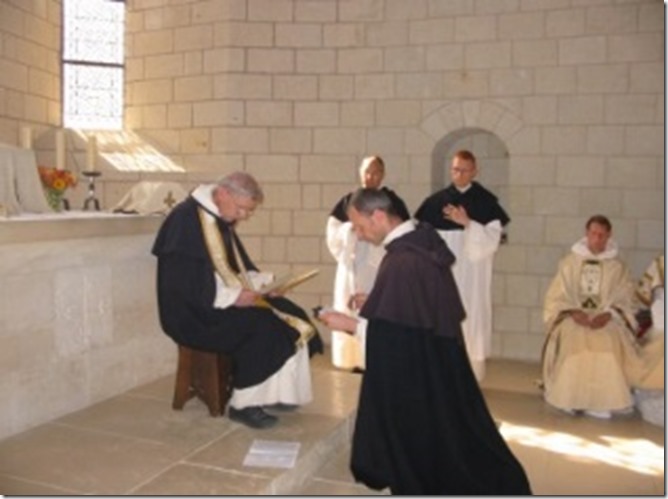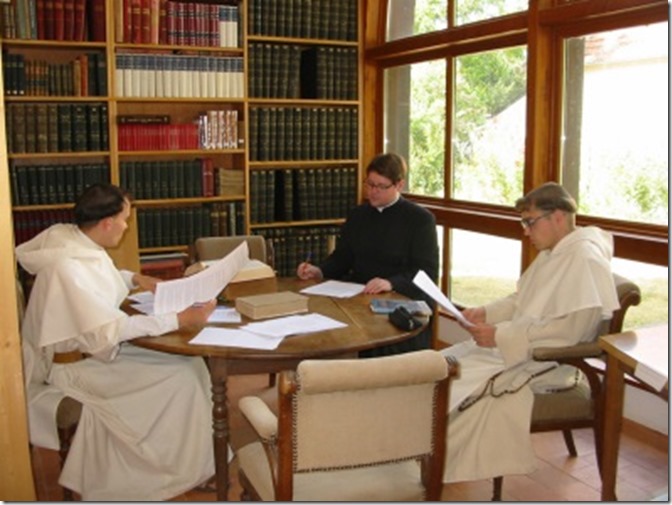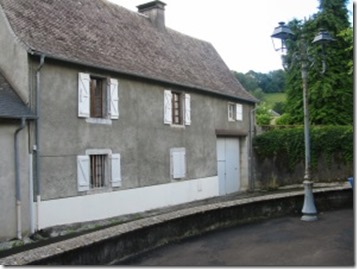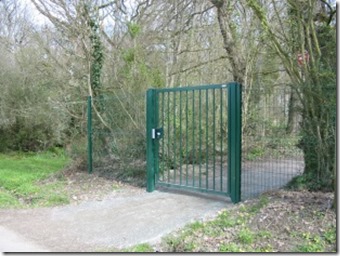Letter from the Dominicans of Avrillé
No. 38: January 2023
“Unless The Lord Build The House…
…they labor in vain that build it.” This verse from Psalm 126 assures us in advance that the construction of the New World Order is doomed to failure, as were the project of a gigantic tower in Babel and so many other utopias dreamed up by “masons.” At the time chosen by God, this project, which has come out of hell, will return there for the confusion of the devil and his minions.
The history of the world, says Saint Augustine, is that of the construction of two Cities: the City of God, cemented by love of God to the point of self-contempt, and the earthly City, or City of the Devil, by love of self to the point of contempt for God. But, while the divine City is built in silence and discretion, the devil’s City, unceasingly overturned and unceasingly under construction, announces itself with great fanfare and publicity.
Look at the “first stone” of the divine City: it appears in the manger of Bethlehem, unknown to most men, but not to the angels who come to sing their joy that the Kingdom of Heaven, somewhat disrupted by Lucifer’s revolt and Adam’s sin, was being rebuilt more beautiful than it was. Then compare with the dark kingdom foreseen by the United Nations Agenda 2030 and the World Economic Forum’s Great Reset…
Why two cities?
Why does the good Lord allow this double construction, when He could easily close down the devil’s construction site and let the children of God work quietly? The answer is simple and well known. If the sons of light were not persecuted by the sons of darkness, they would quickly fall asleep and forget to work.
But this is not the time for sleeping, as St. Paul reminded us in the epistle for the first Sunday of Advent: “It is already time to wake up from sleep” (Rom 13:11). We must not settle down on this earth, either. We are traveling, we must walk, we must advance, and this is done “with steps of love”, as the ancients used to say. That is why Jesus comes to visit us with His Cross to detach us from the earth, to turn us towards heaven, to encourage us to turn to Him and to offer him our sorrows and our labors. “The evils that press upon us here below,” says St. Gregory, “impel us to go to God (mala quæ nos hic premunt, ad Deum ire compellunt).”
Blessing of Roses
Let’s do our part
The building of the heavenly city is above all a spiritual matter: this city is built in heaven as we build up the “inner man” within us. Our good deeds, done for the love of God, make our virtues grow, especially charity. At the hour of our death, we will be judged on love and placed in the heavenly edifice in the place we have deserved. And if we find ourselves empty of charity – God forbid! -we will be mercilessly cast into the outer darkness.
However, even if the essential is invisible and takes place in souls, the heavenly city also has a visible aspect, notably in the buildings constructed for the glory of God. In spite of all the efforts of the enemies of the Church (and they are powerful – see the destruction carried out by the Protestants in the 16th century, by the revolutionaries at the end of the 18th century, or by the conciliarists in our days), they have not been able to erase all the religious monuments of the past which show us how God and his holy Mother are loved.
There is no lack of work sites today that deserve your help, but we would like to beg you for some help in building the new parish hall and school cafeteria, which you can see on the cover of this letter.
But, as our main concern is the building of the spiritual Jerusalem, we also ask for your prayers that we may be holy religious, and we assure you of ours.
The War Against Religious
This text is excerpted from a book by Father Marie-Antoine de Lavaur, a Capuchin (1825-1907), one of the founders of the Lourdes pilgrimage, who died in the odor of sanctity. In this book, written in 1879, he describes the wounds from which society suffers. A few months later, on March 29, 1880, the decrees against religious orders were published, which led to the expulsion of religious throughout France (261 establishments, from October 14 to November 8). This text has not aged a bit in almost a century and a half.
[Father Marie-Antoine fictitiously has an angel speak to a pilgrim:]
The angel: I told you, Pilgrim, after a great Doctor, two loves have built two cities. Inspired by this thought, a Christian orator [Father Felix in a sermon in the cathedral of Notre-Dame] said these words: “Two currents carry the new generations in two diametrically opposed directions: one goes to Jesus Christ, the other goes away from Him.”
“The first of these two currents is vast and deep. It follows in a divine silence its slow and progressive march, in spite of the shudders of the passions as they strike the shore. The second grows like a torrent, it is violent, it rushes, it leaps, it foams. It strikes with a crash against the obstacle that rises up, the immovable granite. But, like the torrent, it will pass quickly and will leave behind it only the vestiges of its disasters. This is the anti-Christian current, this is anti-Christianity. It tries once again to overthrow this religion that is always killed and never knows how to die.”
The current that goes to Jesus Christ leads to religious life. The current that goes away Him, flees from this sublime life. The eternal glory of the religious life, pious Pilgrim, is to have the same friends and the same enemies as Jesus Christ. The world does not want religious people because it does not want God or Christ, but God laughs at its fury.
Assumption Procession
Listen to the God of heaven and earth: “This little nothingness which has served me to prove the supernatural, to exalt the glorious and holy poverty and to confound the powers of the world, I am going to use it again to proclaim the glories of the religious life, this masterpiece of my Redemption.” God has spoken. And the child [Bernadette] was chosen by Mary to bear witness to God as the divine model of the religious life. By this first choice, Mary raised her to the rank of the angels; by the second, Jesus raises her far above the angels, He makes her a Queen. Bernadette had been docile to Mary’s call; she was docile to Jesus’ call. Her soul had melted with love before the Grotto where Mary spoke, now it melts with love before the tabernacle where Jesus speaks.
“My daughter, listen: From all eternity, I have chosen you to be the bride of my heart. The religious life to which I call you is the paradise of the earth. Only souls victorious over the world and their passions can inhabit it. There, I watch over them as a mother watches over the child of her tenderness. Perfect peace, ineffable joy: that is their life. It is the life of love; it is the life of the angels, with the only difference that the love of the angels only enjoys my divinity, while here love immolates itself unceasingly. This is paradise, I have conquered it with My Blood, and it is this paradise that I want to give you. ‘Come, my child, look, incline your ear’ (Ps 44). When My mother spoke to you, She left you among your people. You went back to your father’s house. You were only Her messenger. I want to make you My wife. You will be My Queen because I am King, and a Queen must live in the King’s palace: the convent is that palace! Leave the world that is not worthy of you; are you not greater than the world? ‘Forget your people and your father’s house’ (Ps 44), say goodbye to your mother, your brothers, your sisters. I do not want divided hearts. I want you all for Myself, I find you so beautiful! You reflect the beauty of My Mother, My Immaculate Mother.”
Thus spoke Jesus in the depths of the tabernacle, and the child quivered! It is so sweet, the voice of Jesus! It is so strong, so powerful, so penetrating… He shows His heart to the ravished child, from this heart an arrow leaves. This flaming arrow is the arrow of divine love (Ps 44:6). Bernadette’s heart is conquered; it belongs to Jesus for eternity.
(to be continued)
[Excerpt from Nos plaies sociales et la mission de Bernadette, chapter 8, “Septième plaie: La guerre contre les religieux”]
Chronicle:
June 29th 2022 (SS. Peter and Paul) 2022: Solemn High Mass in thanksgiving for the 40th anniversary of the ordinations of Fathers Innocent-Marie and Marie-Dominique (at Écône in 1982, by Archbishop Lefebvre).
July 2022: A busy summer, as always: spiritual retreats preached at the Friary; camps for the children of St. Thomas High School and St Philomena Primary; General Chapter of the Knights of Our Lady; Gregorian chant session…
August 4th-13th 2022: Fr. Koller preaches our annual retreat, on the Merciful Love of Our Lord. At the end of the retreat, Brothers Pie-Marie and Marie-Thomas renew their vows, and Brother Joseph-Marie makes his profession as an oblate brother.
Brother joseph-Marie’s profession
A ugust 16th 2022: Fr. Marie-Laurent leaves for his apostolate in the Czech Republic, and then in Poland, where Fr. Hyacinthe-Marie joins him on the 21st.
August 22nd 2022: Solemn Funeral Mass for Mr. Joël Morin, our faithful and sorely missed history professor.
September 5th-11th 2022: Living Latin session for the clerical brothers and seminarians.
Living Latin session
October 17th 2022: Acquisition of a new property in the village of Bartrès, near Lourdes, where Saint Bernadette was employed as a shepherd girl shortly before the apparitions of Our Lady. Five minutes by car from the Grotto, the “Saint Dominic Hostel” now provides us with a place to help our postulants get used to life away from the world before entering the Friary.
St. Dominic’s Hostel at Bartrès
October 22nd 2022: First Solemn High Mass of Fr. Paul Rousseau (SAJM), former student of the boys’ school, ordained by Bishop Faure in June.
November 19th 2022: Fr. Emmanuel-Marie and Br. Marie-Thomas present our publications at a festival organized by Civitas (a group promoting Catholic social doctrine), in Paris.
December 8th 2022: Solemn High Mass for the Immaculate Conception at the “Greniers Saint Jean” in Angers, followed by a candle-light procession throughout the center of town.
December 16th 2022: The children of Saint Philomena School present their Christmas Pageant to the elderly in a nearby retirement home.
December 23rd – January 9th 2022: Fr. Marie-Laurent is in the US (Texas, Kansas…) to help out Bishop Zendejas.
January 1st 2022: Annual Christmas “afternoon recreation” for the fathers and brothers. This year the lay brothers present “Jodel, Our Lady’s Minstral”, and the clerical brothers rejoice us with their musical talents (piano, flute, guitar…).
January 27th 2022: Fr. Hyacinthe-Marie holds the first meeting by Skype for our tertiaries in Poland.
January 27th – 29th 2022: Formation session at the Friary for the Knights of Our Lady.
January 14th – 20th 2022: Annual pilgrimage in Rome for the senior class of St. Thomas Aquinas, accompanied by Fr. Emmanuel-Marie.
News from our worksites
Begun in September, the construction of the new parish hall is advancing quickly. (see the picture on the cover.)
We have also finished fencing off the woods, as well as a plot of land behind the boys’ school. These past few years, illegal intruders have been getting less and less rare.
For timely articles and spiritual reading, please go to our website:
To send a donation:
YOU MAY USE PAYPAL (ON OUR WEBSITE), OR SEND TO:
Dominicans of Avrillé, Inc.
P.O. Box 23, Newman Lake, WA. 99025
Please take note that we no longer have our other bank accounts. Please specify when sending donations to the above address whether your donation is in American or Canadian dollars.
For more information :
Couvent de la Haye-aux-Bonshommes
49240 Avrillé, France











